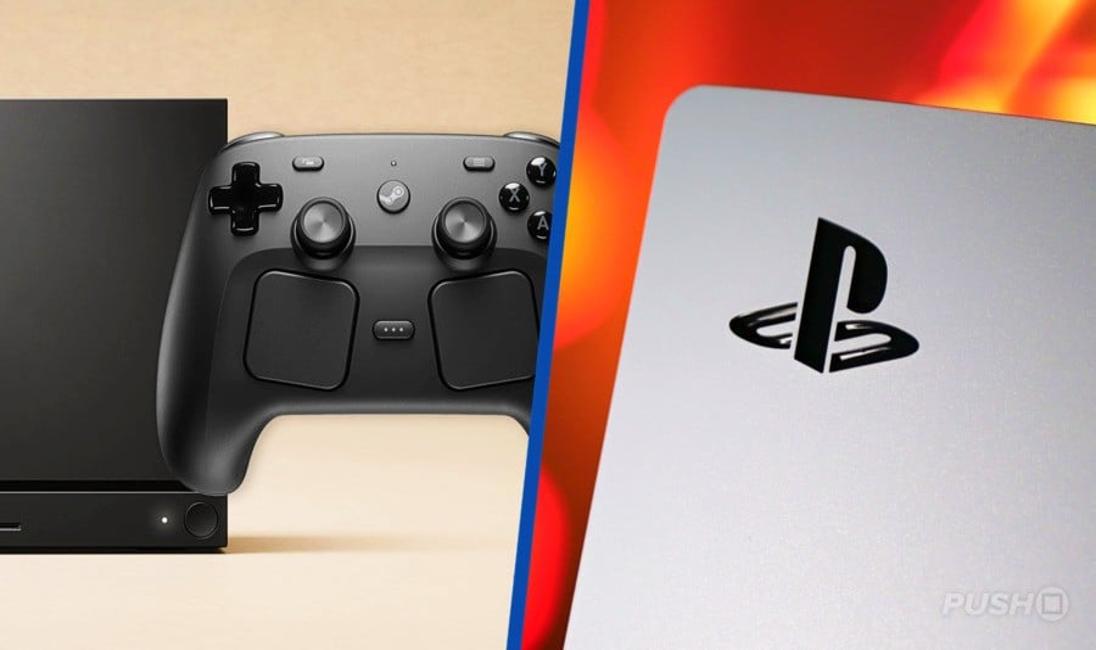Okay, let's talk Steam Machines. Remember those? It feels like a lifetime ago when Valve, the company behind Steam (duh!), decided to shake up the console world. The idea: a PC-based console that could play all your Steam games on your TV. Sounds awesome, right? But… things didn't quite go as planned. And now, with the PS5 firmly planted as a gaming behemoth, it's hard not to look back and wonder: could the Steam Machine ever have been a real rival?
I initially thought the Steam Machine was DOA (dead on arrival). A niche product for PC enthusiasts. But wait, there's something even more interesting here… the core concept had real potential. And maybe, just maybe, it was ahead of its time. Now, with PC gaming gaining even more mainstream traction, it's high time we re-examine this intriguing piece of gaming history.
The Dream vs. The Reality of the Steam Machine
The dream was simple: plug-and-play PC gaming on your TV, powered by SteamOS, Valve’s Linux-based operating system. No more fiddling with Windows settings, driver updates, or compatibility issues. Just pure, unadulterated gaming goodness. Valve partnered with a bunch of manufacturers to create different Steam Machines, each with varying specs and price points. Think of it like a build your PC, but someone else puts it together. But here’s the thing:
The reality was… well, a bit messier. SteamOS, while promising, lacked the game library and driver support of Windows. And the hardware? A confusing mix of configurations and price points, with no clear advantage over building your own gaming PC (which many potential buyers probably would have preferred). The marketing was all over the place, too. There wasn’t a clear message about what the Steam Machine was for, or who it was for. Were they trying to compete with consoles? Or replace gaming PCs? Nobody seemed to know! Steam has so many of the best games anyway, imagine having it on a console!
Was the Idea Doomed from the Start?
Not necessarily. The core concept – bringing PC gaming to the living room in a console-like package – is still compelling. Look at the success of devices like the NVIDIA Shield TV or even the Steam Deck. These devices prove that there's a market for easy-to-use, TV-friendly PC gaming. The problem with the Steam Machine wasn't the idea, but the execution.
But there's a deeper element to consider. The Steam Machine launched during a transitional period. Cloud gaming was still in its infancy. PC gaming wasn't quite as mainstream. Valve tried to carve out a new niche, but it required gamers to fully embrace Linux, a challenge that wasn't so easy.
And that's the frustrating thing about the Steam Machine. The potential was there. But the timing, the hardware fragmentation, the OS limitations… it all added up to a missed opportunity. I keep coming back to this point because it’s crucial. The Steam Machine represents a bold attempt to redefine gaming, but it stumbled along the way.
And think about it this way: If you wanted a living-room gaming PC, wouldn’t you just… build one? Or buy a prebuilt one and hook it up to your TV? That’s what many people did, and continue to do. The PS5 has got such a huge collection of games too.
Lessons Learned and Possible Futures
The Steam Machine’s failure isn't just a funny story. It provides lessons to the industry. It shows that innovation requires more than just a good idea; it requires flawless execution and a clear vision. It shows the need for an accessible and welcoming platform if mainstream acceptance is to be anticipated.
What would a modern Steam Machine look like? Maybe something closer to the Steam Deck – a handheld device that can dock to your TV. Or perhaps a streamlined, console-like PC running a customized version of Windows, with seamless access to Steam and other PC game stores. The possibilities are endless!
Actually, that's not quite right… The modern equivalent already exists! It's called a gaming PC. But the point is that Valve tried something new. And even though it didn't work, that willingness to experiment is what makes them so interesting.
And it's good to remember that Valve has a history of trying stuff. Some works, some doesn’t. Steam Machines didn’t. But the Steam Deck proves that they were not wrong in trying to bring PC games in a compact, user friendly system.
I remember when I first saw the Steam Machine prototypes. I was working at a small PC gaming store, and we got a demo unit in. We were excited! But quickly the excitement gave way to confusion. What was this thing? Who were we supposed to sell it to? Ultimately, it just sat in the corner, gathering dust.
During my time trying to pitch the Steam Machine to customers, I noticed a pattern. Most gamers were either die-hard PC enthusiasts who preferred to build their own rigs, or console gamers who didn't understand the appeal of PC gaming on their TV. The Steam Machine was caught in the middle, failing to appeal to either group.
And you might be wondering, "How can the Steam Machine possibly compete with consoles like the PS5?" Well, it never really did. But it’s interesting to consider why. The PS5 offers a streamlined, curated gaming experience, with exclusive titles and a focus on simplicity. The Steam Machine, on the other hand, was trying to offer something different: the freedom and flexibility of PC gaming on your TV. It's two totally different approaches to the same goal.
Oh and here is some useful info, here is a guide to some free to play Minecraft servers.
FAQ: Steam Machine Edition
Was the Steam Machine a failure?
In terms of mainstream success, yes. It didn't achieve the sales numbers Valve hoped for, and it's largely been forgotten. However, it’s important to see it as an experiment. It tried to do something different. Something that, maybe, was ahead of it’s time.
Could a Steam Machine rival a PS5 today?
Unlikely, in its original form. The PS5 has a massive head start in terms of exclusive games, brand recognition, and user base. A modern Steam Machine would need to offer something drastically different to stand out. The price would be a great start, as building a PC can get expensive!
Why did the Steam Machine fail?
Multiple factors: a confusing product lineup, limited SteamOS game support, a lack of clear marketing, and the fact that building your own gaming PC was often a better (and cheaper) option. Add to that the challenge of convincing console gamers to switch to a Linux-based system, and you have a recipe for disaster.
Is SteamOS dead?
Not at all! SteamOS lives on as the operating system for the Steam Deck, and it's actually pretty great. Valve learned a lot from the Steam Machine experiment, and they've applied those lessons to the Deck. Think of the Deck as the Steam Machine’s spiritual successor – a more focused, better-executed version of the original idea.





















